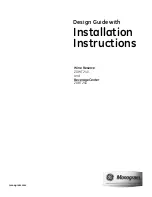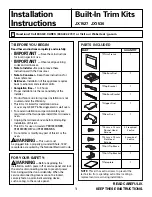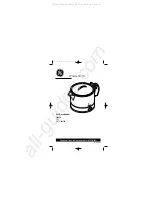
www.cuisinetechnology.com
12
Delicate foods (such as seafood, berries, peas, etc) may be
crushed or damaged if packaged using automatic vacuuming and
sealing . Manual vacuuming and sealing gives you precise control
over the vacuum process to prevent these foods from being
ruined . It is also useful for packaging some juicy foods, helping
prevent liquids from being drawn out of the bags .
1 . Place the food item in a heat-seal bag, position the bag
properly in the Vacuum Channel and close the Vacuum
Compartment Lid .
2 . Press and hold
Pulse
. The vacuum pump will turn “On” until
the button is released, allowing you to observe and control
the amount of air removed from the bag . The shorter the
“pulses,” the greater your control .
3 . Press
Seal
to seal the bag and complete the process .
Manual Vacuuming & Sealing
NOTE:
If the Seal button is not pressed, the unit
will automatically end the process approximately 7
seconds after the Pulse button is released .
4 . Remove the bag and check for proper vacuum and seal .
NOTE:
A positive seal will look “clear” upon
inspection . If the seal is spotty, incomplete,
wrinkled, white, or milky, cut the seal and restart the
vacuuming and sealing process .
!
WARNING
: Be sure to store vacuum packaged items
properly after sealing . All perishable foods must be
refrigerated or frozen to prevent spoilage . Vacuum
packaging is not a substitute for canning .
!
Extending the Sealing Time
The standard seal time of 5 seconds should be sufficient for
most bag thicknesses . If you are using thicker bag materials
or seals are weak or incomplete, you can extend the seal time
to 10 seconds by pressing
Seal Plus
prior to pressing
Auto
,
Pulse
or
Seal
.
Canceling the Vacuum or Sealing Process
Pressing
Stop
at any time automatically stops whatever
process is running .
!
Summary of Contents for 150 SERIES
Page 1: ...150 SERIES VACUUM SEALING SYSTEM 110 877 081913 USER S GUIDE...
Page 2: ......
Page 21: ...www cuisinetechnology com 20...







































